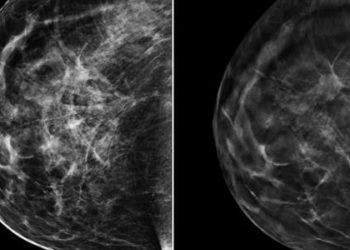Insurance status affects treatment of early stage breast cancer
Image: PD
1. Women with Medicaid on average presented with significantly larger tumors and on the whole were more likely to be treated with mastectomy than women with private insurance.
2. Women with private insurance were more likely than women with Medicaid to receive a mastectomy for smaller tumors.
Evidence Rating Level: 2 (Good)
Study Rundown: This study is one of the first to look at the effects of insurance type (Medicaid vs. private insurance) on the treatment of breast cancer. Researchers found that although women on Medicaid were more likely to present with larger tumors and thus were more likely to receive mastectomy, women with private insurance were more likely to receive mastectomy for smaller tumors, in which breast conserving therapies (i.e. lumpectomy) have been shown to provide equivalent survival rates while being more cost effective.
Although the study asks a novel question, results are limited in generalizability because the study cohort was taken from one health system. Further studies should be repeated in different populations. Moreover, they should look into not only why women with Medicaid are presenting at later stages, but also why women with private insurance are receiving mastectomies for smaller tumors when the evidence states that less invasive procedures are indicated.
Click to read the study in JAMA Surgery
In-Depth [retrospective analysis]: included women with stage I-III invasive breast cancer who had surgery from 1996-2009 in the ProMedica Health System in Toledo, Ohio. The primary outcome examined was rates of mastectomy between Medicaid and private insurance. Additionally, logistic regression analyses were done to assess the association between various variables (age, size and stage of tumor at diagnosis) and use of mastectomy.
Of the 1,539 women included in the study 651 (42%) were treated with mastectomy compared with 888 (58%) treated with breast conserving therapy (BCT). Women with Medicaid were more likely to present with significantly larger tumors at diagnosis than those with private insurance (3.3 cm vs 2.1 cm, p<0.05) and received significantly more mastectomies on the whole (60% vs 39%, p<0.05). Of women with smaller tumors (<2 cm), those on Medicaid were less likely than women with private insurance to receive full mastectomy (11% vs 47%, p<0.05).
By Maren Shapiro and Leah Hawkins
More from this author: Black men less likely to receive follow-up for elevated prostate cancer marker, PSA, More U.S. women using emergency contraception pill, No-cost contraception reduces unintended pregnancies
© 2013 2minutemedicine.com. All rights reserved. No works may be reproduced without written consent from 2minutemedicine.com. Disclaimer: We present factual information directly from peer reviewed medical journals. No post should be construed as medical advice and is not intended as such by the authors or by 2minutemedicine.com. PLEASE SEE A HEALTHCARE PROVIDER IN YOUR AREA IF YOU SEEK MEDICAL ADVICE OF ANY SORT. Content is produced in accordance with fair use copyrights solely and strictly for the purpose of teaching, news and criticism. No benefit, monetary or otherwise, is realized by any participants or the owner of this domain.





